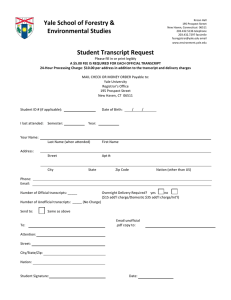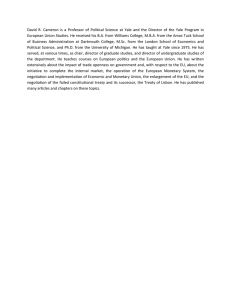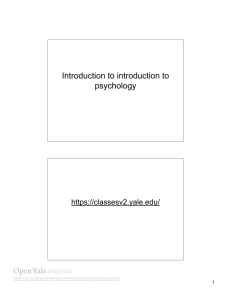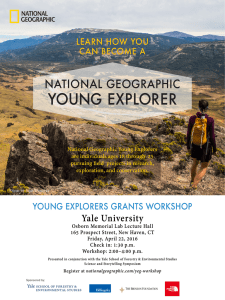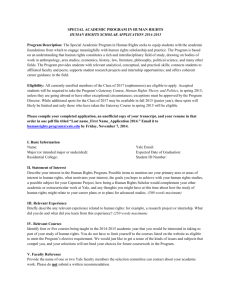C E P Center for
advertisement
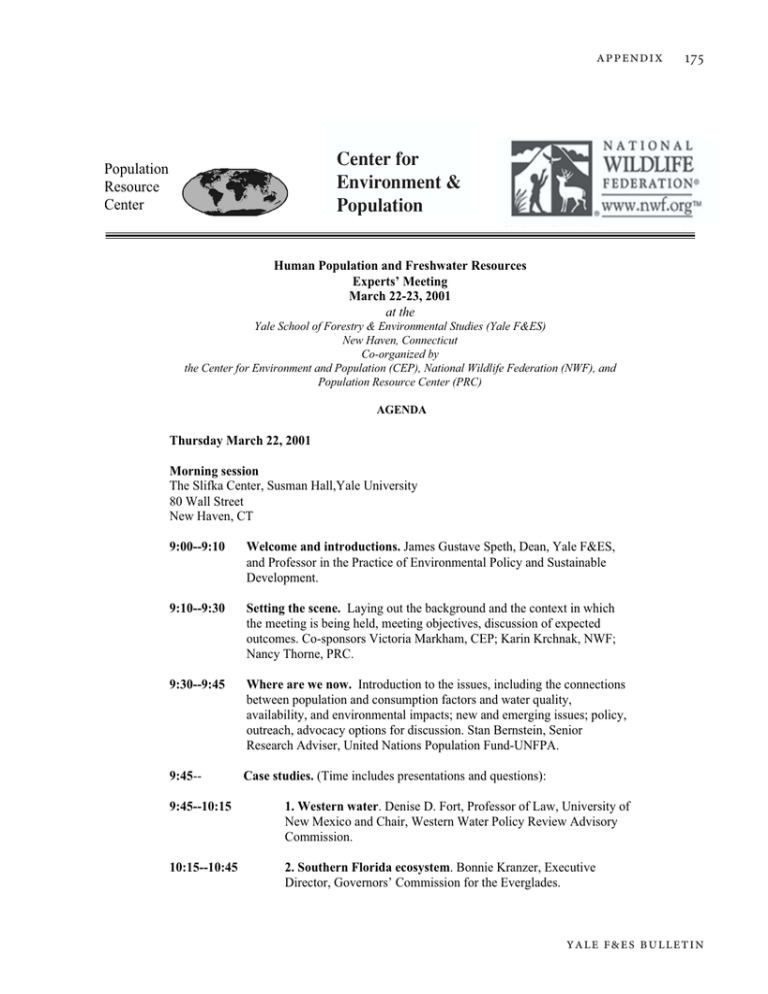
Center for Center for & E nvironment Environment & P opulation Population Resource Center Population Human Population and Freshwater Resources Experts’ Meeting March 22-23, 2001 at the Yale School of Forestry & Environmental Studies (Yale F&ES) New Haven, Connecticut Co-organized by the Center for Environment and Population (CEP), National Wildlife Federation (NWF), and Population Resource Center (PRC) AGENDA Thursday March 22, 2001 Morning session The Slifka Center, Susman Hall,Yale University 80 Wall Street New Haven, CT 9:00--9:10 Welcome and introductions. James Gustave Speth, Dean, Yale F&ES, and Professor in the Practice of Environmental Policy and Sustainable Development. 9:10--9:30 Setting the scene. Laying out the background and the context in which the meeting is being held, meeting objectives, discussion of expected outcomes. Co-sponsors Victoria Markham, CEP; Karin Krchnak, NWF; Nancy Thorne, PRC. 9:30--9:45 Where are we now. Introduction to the issues, including the connections between population and consumption factors and water quality, availability, and environmental impacts; new and emerging issues; policy, outreach, advocacy options for discussion. Stan Bernstein, Senior Research Adviser, United Nations Population Fund-UNFPA. 9:45-- Case studies. (Time includes presentations and questions): 9:45--10:15 1. Western water. Denise D. Fort, Professor of Law, University of New Mexico and Chair, Western Water Policy Review Advisory Commission. 10:15--10:45 2. Southern Florida ecosystem. Bonnie Kranzer, Executive Director, Governors’ Commission for the Everglades. 10:45--11:00 Coffee Break 11:00--11:30 3. Great Lakes. J. David Rankin, Program Director, Great Lakes Protection Fund. 11:30--12:00 4. Chesapeake Bay. Margaret A. Palmer, Professor of Biology, University of Maryland, and President, Ecological Society of America, Aquatic Section. 12:00--12:30 5. Rio Grande, U.S. and Mexico. Mary E. Kelly, Executive Director, Texas Center for Policy Studies. 12:30--1:30 Lunch Afternoon session 1:30-- Panel Discussions. Panelists will make brief presentations, then discuss links between the case studies, policy, media and advocacy (time includes presentation and discussion). 1:30--2:15 Media and Public Outreach. Kathy Bonk, Director, Communications Consortium Media Center (CCMC). Crafting and conveying population-environmental messages to the media. Followed by discussion on how to reach the media with messages on water issues. 2:15--3:00 Policy and Decision-Makers. Margaret Pollack, Director, Office of Population, U.S. Department of State. Reaching policymakers on the issues. Followed by discussion on integrating issues into local to national U.S. policies. 3:00--3:15 Coffee Break 3:15--4:00 Activitists and Advocacy. Pam Goddard, Grassroots Coordinator, National Wildlife Federation (NWF). Reaching grassroots activists. Followed by discussion on how to apply the population-water issues to advocacy campaigns and grassroots activism, training, and materials. 4:00--4:30 The Issues and Academia. John Wargo, Yale F&ES, Professor of Environmental Risk Analysis and Policy, Director of the Environment and Health Initiative. Discussion of population, health and water research, U.S. policies, and legislation. Friday March 23, 2000 The Slifka Center, Yale University Zucker Reading Room and Library 9:00--12:00 Discussion Topics: The following topics will be discussed specifically for each of the three target audiences: 1) policymakers/U.S. Congress; 2) grassroots activists; 3) media: A. Main Issues 1. What are the top issues that define the relationship between population factors and freshwater resources? What is the best way to frame the issues for the various audiences? B. Understanding and Addressing the Issues 1. What approach should be taken so the target audiences can better understand and address the issues? What should we try to convey that can realistically be accomplished over the short (3-5 years), mid (10-15 years), and long term (25-50 years)? 2. What initiatives have proven successful, which haven’t, and which should be emulated? Where are the gaps, what research, policy, public outreach is needed? 3. What are the best messages that will resonate with the audiences? Who is currently most effective at getting the message(s) out? Who are the best messengers or influentials for the target audiences? 4. What are some new approaches to addressing the issues? How can we present the issues in a new light with regard to U.S. domestic and foreign policy, the media, the public? 5. Where should financial resources and NGO efforts be concentrated to effectively educate the public and policymakers? C. Groups’ Strategy 1. How can this group work to move local, regional and international population and water issues forward? 12:00 Close
